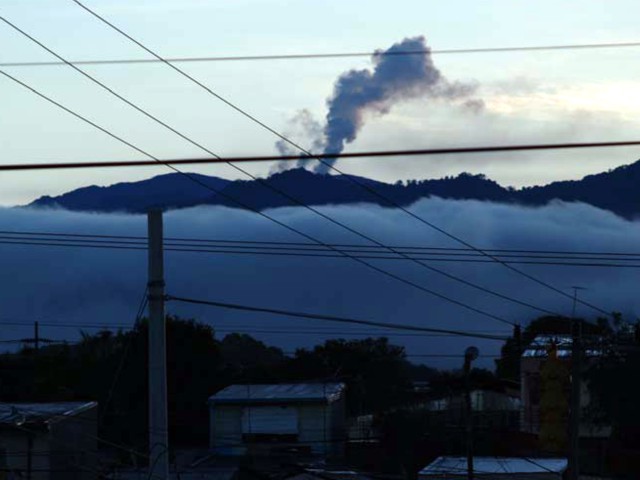Report on Turrialba (Costa Rica) — January 2008
Bulletin of the Global Volcanism Network, vol. 33, no. 1 (January 2008)
Managing Editor: Richard Wunderman.
Turrialba (Costa Rica) Fumarolic increases during August 2007-January 2008
Please cite this report as:
Global Volcanism Program, 2008. Report on Turrialba (Costa Rica) (Wunderman, R., ed.). Bulletin of the Global Volcanism Network, 33:1. Smithsonian Institution. https://doi.org/10.5479/si.GVP.BGVN200801-345070
Turrialba
Costa Rica
10.025°N, 83.767°W; summit elev. 3340 m
All times are local (unless otherwise noted)
Enhanced fumarolic activity accompanied by new fractures at the summit was noted during June-September 2007 (BGVN 32:08). The earlier report noted that the fumaroles had spread over a larger area and contained molten sulfur, a condensate previously not seen here in more than 25 years of continuous monitoring by the Observatorio Vulcanológico y Sismológico de Costa Rica-Universidad Nacional (OVSICORI-UNA). By mid-August 2007, acute chemical burning of important patches of natural forest had occurred. This report covers the period from October 2007 through January 2008.
During October, new sites of gas discharge, small landslides, and accelerated vegetation die-off were noted from various locations within and around the crater. Fumaroles were active and widespread across the central crater. Many exhibited sulfur deposits and those in the S, SE, and SW reached a temperature of 91°C.
Areas burned by acute acidification extended during November. Fieldwork conducted by OVSICORI-UNA confirmed an unusual output of gas from several fumaroles along the S outer wall of the volcano. Pastures turned yellowish near the upper areas, and native and exotic tree species were impacted as well as birch tree patches along most drainage basins.
During December, within the W crater, fumarole temperatures reached 280°C and significant sulfur deposits were noted. Local residents confirmed an unusual output of gas from several fumaroles along the S outer wall of the volcano. Areas burned by acute acidification extended during the month. On 5 December, members of the media and local communities observed a gas-and-steam plume from Turrialba that rose to an altitude greater than 5.3 km (figure 12).
 |
Figure 12. Column from Turrialba observed and photographed from Heredia City, located 40 km W of the volcano taken at 0540 on 5 December 2007. Courtesy OVSICORI-UNA. |
On a team visit between 30 and 31 January 2008, OVSICORI staff documented the progression of fumarolic activity in the W crater, the external W crater walls, and distant areas towards the W, NW, and SW. Some of the fumaroles correspond with two fractures. One to the SW of the W crater, trending SW, was 100 m in length and 2 to 3 cm wide, and deposited sulfur. The second crack to the NW of the W crater, also trending SW , had temperatures of 72°C and discharged steam and gas affecting the adjacent vegetation. To the NW of the W crater, the team studied an area of about 20 x 50 m with constant gas emission and a temperature of 88°C.
Geological Summary. Turrialba, the easternmost of Costa Rica's Holocene volcanoes, is a large vegetated basaltic-to-dacitic stratovolcano located across a broad saddle NE of Irazú volcano overlooking the city of Cartago. The massive edifice covers an area of 500 km2. Three well-defined craters occur at the upper SW end of a broad 800 x 2200 m summit depression that is breached to the NE. Most activity originated from the summit vent complex, but two pyroclastic cones are located on the SW flank. Five major explosive eruptions have occurred during the past 3500 years. A series of explosive eruptions during the 19th century were sometimes accompanied by pyroclastic flows. Fumarolic activity continues at the central and SW summit craters.
Information Contacts: Eliécer Duarte, Erick Fernández, and Vilma Barboza, Observatorio Vulcanológico y Sismológico de Costa Rica, Universidad Nacional (OVSICORI-UNA), Apdo. 2346-3000, Heredia, Costa Rica (URL: http://www.ovsicori.una.ac.cr/); Tellez and Francois Robichaud, Université de Sherbrooke, 2500 boul. de l'Université, Sherbrooke, Québec J1K 2R1, Canada.

